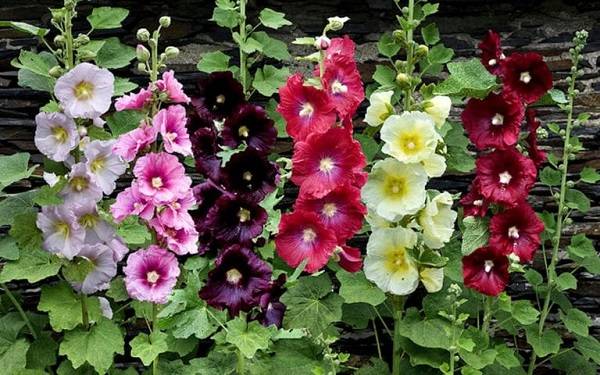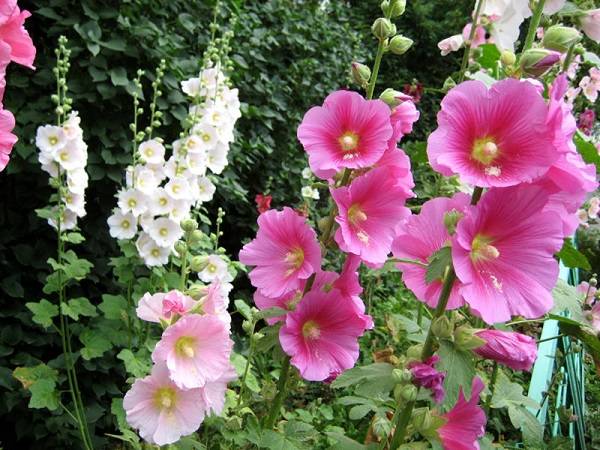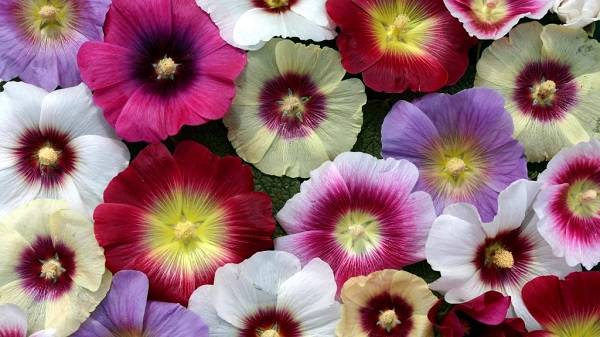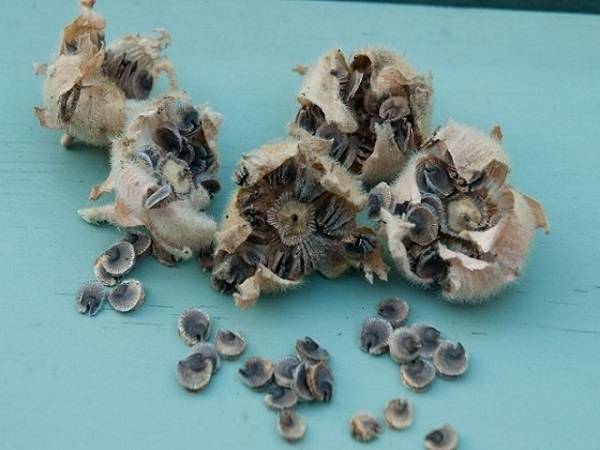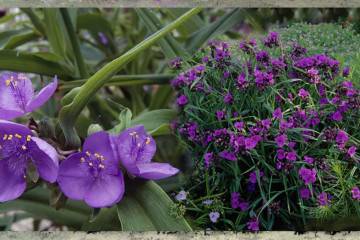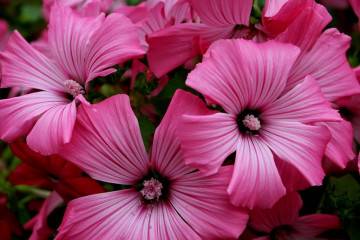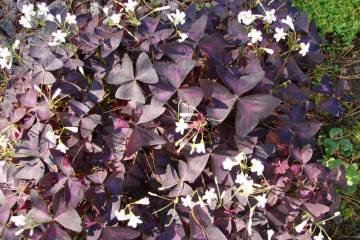Perennial mallow - planting and care
Content:
Perennial mallow is one of the most visible flowers in the garden. It immediately attracts attention with its beauty and aroma. There are many varieties, with all kinds of colors, textures of leaves, petals. Despite this, it is easy to recognize mallow flowers.
Perennial mallow - planting and care
The plant has long shoots. During the flowering period, a large number of flowers are formed. One such "arrow" can form up to 150 flowers. The mallow plant is unpretentious in care. It's easy to grow. However, the cultivation process has its own characteristics.
How to plant a mallow
There are two planting options: seeds and seedlings. Some varieties are planted with cuttings.
Planting is carried out in autumn and spring. It is worth using peat tablets or pots, since mallow does not like transplants. In a cup, the seeds will sprout in 2-3 weeks.
Hybrids are grown by cuttings. In the spring, select suitable cuttings and carefully separate them from the rest of the plant. In the summer, cuttings are cut from the stem and given time for rooting in pots, in a greenhouse.
The frequency of watering should be guided by the weather. In dry times, 1 watering per week is sufficient. In a normal summer with normal temperatures, a couple of waterings every 7 days is enough. It is important to remove weeds in a timely manner.
To enrich the soil, you need to feed the bushes with fertilizers. Mainly organics and potassium and phosphorus. Tall varieties definitely need support. High supports are dug in nearby and a tree is tied to them.
The origin and appearance of mallow
So what is mallow? Malva is a flower (Malva) that comes from Malvia. It also has other names: stock-rose and mallow mallow. At the moment, there are more than 30 species of this plant. As a rule, this is a tall plant, but there are also undersized varieties.
The forest mallow is considered the parent of all plants in this family. He has a powerful and strong root system, highly branching. The stem is located strictly vertically, or lies on the ground. There are plants with an ascending stem. Height varies from 30 to 120 cm, depending on the variety.
At the base of the stem there is fluff and "hair". The rest remains uncoated - smooth. Rounded leaves resemble a heart. They have 5 to 7 blades.
Mallow flowers are large enough. They look like a bell, only enlarged. The petals are heart-shaped. Flowering begins from mid-July to early September. The forest beauty begins to bloom at the age of 2 years.
Mallow flower description
Low varieties grow only up to 75 cm. They are "dwarf". Growers prefer tall ones. An adult plant can shoot an arrow with a length of 2.5 to 3 meters. Planted in one direction parallel to the fence - a real "living" hedge that can protect from prying eyes and, of course, give the garden plot decorativeness.
Each shoot has rich green leaves and densely planted flowers. Malvina flower is easy to remember, because it bears similarities with several plants at once: with roses, peonies, poppies.
How mallow blooms
Mallow blossoming is its peculiarity and a separate topic. On one shoot, as mentioned above, up to 150 flowers are formed. Flowering starts from the bottom up. Initially, the lower inflorescences bloom, gradually blooming higher and higher. This alternating bud opening is a real miracle.
Tall plants can bloom in May and bloom until the very last days of November, even before the first frost. This flowering feature has made the flower popular for cut, that is, for commercial purposes. It is enough to cut at the right time (during the period of bud formation) so that the cut flower will delight with its long flowering.
There are many varieties of this amazing flower. Depending on the variety, the color of the buds can be:
- white;
- yellow;
- burgundy;
- red
- and others (there are many options).
She is so beautiful that she can decorate even the most inconspicuous area.
Types and varieties of mallow
In nature, in vivo, there are many varieties. Only a few of them are popular. For example, Mallow Yellow or Yellow Queen.
Mallow yellow
Such a plant can be grown up to 2-2.5 m in height. Covered with yellow buds with a golden hue. Terry petals. Each bud is quite large, at least 12 cm in diameter. The plant needs good lighting. Tolerates dry periods without problems. For the winter, they are covered with spruce branches. Any other breathable material can be used.
Terry mallow perennial
An elegant, graceful plant. The result of painstaking and careful work of breeders. In an adult state, the plant reaches 2 meters. The flowers are like a peony. Painted in pink and purple.
Often used in landscape design. Grow both as a single plant and together with other crops.
Malva White
Low-growing shrub, the maximum growth of which reaches 70 cm. Variety of musk mallow. It can be planted in open ground. For example, make a beautiful flowerbed in the yard. Perfect for creating a bouquet arrangement.
Mallow Musk pink
Another variety of Musk mallow, only with pink petals. An adult plant reaches a height of 1 meter. Covered with flowers with pastel pink petals. An excellent partner for White mallow. Together they look just amazing.
Bush mallow
The bush variety has a maximum growth of 2.5 m. The bush is dense, with spreading branches. The flowers are large in volume and have a rich color. The flowers give off a pleasant, delicate scent. It can withstand frost and drought perfectly. Prefers open sunny places, nutritious soil.
Tree mallow
Arboreal - compact tree. The flowers are large enough with double petals. Pink and white flowers are popular in design. Only now the breeders continue to work and receive more and more new hybrids, surprising in their appearance and color. The varieties with peach, red, turquoise (blue) flowers were obtained.
Planting perennial terry mallow in open ground
The plant feels great outdoors. Planting and growing mallow is easy. It is only necessary to comply with some conditions and know the landing dates. No special care is required.
Growing mallow from seeds
Seeds are obtained from seed pods. They are flat and rounded. They are located in the place of the sepals deepening.
When the seeds ripen, the sepal turns yellow. At this moment, the boxes are cut. The seeds are ripened for 30 days. When they are fully ripe, they disintegrate separately. Experienced flower growers strongly recommend holding the seeds so that there is good germination. It is better if they lie for a period of time from 1.5 to 2 years.
To "awaken" the seed, you just need to soak it in water for 12 hours. When sowing, the seeds are placed at a distance of 50 to 70 cm. Depending on the growth of an adult plant, this distance is reduced or increased. To plant a seed, make a hole 2-3 cm deep. In each hole - 3 seeds. Sprinkle with earth and immediately moisten the soil.
The first shoots are formed in the period from 14 to 21 days. Two seasons are suitable for sowing seeds - autumn and spring. Planting in the fall should be covered with peat to protect it from frost.
Growing mallow through seedlings
You need to sow seeds for seedlings at the very beginning of spring. Peat pellets will be an ideal intermediate growth site.
The peat will nourish the seedlings. The seedlings will grow healthy and strong. The pick will take place simply and without problems. Sowing on a permanent place of growth in open ground is possible only in summer. Before planting, it is advisable to harden the seedlings in advance for 14-21 days.
What you need to plant mallow
First, you need to determine exactly the timing, location. Everything in order. The planting time is strongly influenced by the selected variety and planting method. The easiest one seems to be seed. However, such a plant will bloom only by the next season, at best. Seeding by seedlings helps to shorten the time to flowering.
In open ground, it is worth sowing in mid-June to exclude the possibility of return frosts at night. For seedlings, it is worth choosing the end of winter with a further dive into open soil at the very end of May.
Choosing the best place
In order for the dacha to turn into a real work of art, you need to choose the right place where to plant the plant. This is especially important when it comes to perennials. Good lighting is required. Better to be located further away from groundwater. The ideal place is a hill. You can create it artificially.
The arrows of a young plant are fragile and can easily break in the wind. Therefore, it is worth planting a seedling in a place protected from light. For example, along the fence and make garters. The land needs nutritious, airy, with good drainage. Water should not be allowed to stagnate in the soil. This can cause root rot disease.
Feeding mallow for lush summer bloom
For abundant, decorative flowering, you need to take care of the plant, in particular, apply fertilizers. Malva loves organics. Be sure to add phosphorus and potassium.
After fertilizing, you can cover the soil with mulch to keep the nutrients in the soil for longer.
Preparing for winter
Care is also required in winter, when the plant is in a "dormant" state. An important procedure is pruning long branches immediately after flowering. You need to cut to the very root. This will help keep it in shape and keep pests to a minimum.It is good to make a shelter for the mallow so that it is warm during the rest period. You can cover it with spruce branches.
Mallow is a graceful plant despite its size. Able to decorate any landing site. Differs in flowering. First, the lower buds bloom and so on to the very top. It is interesting to watch this process. Many summer residents grow mallow. It is unpretentious and easy to care for.
